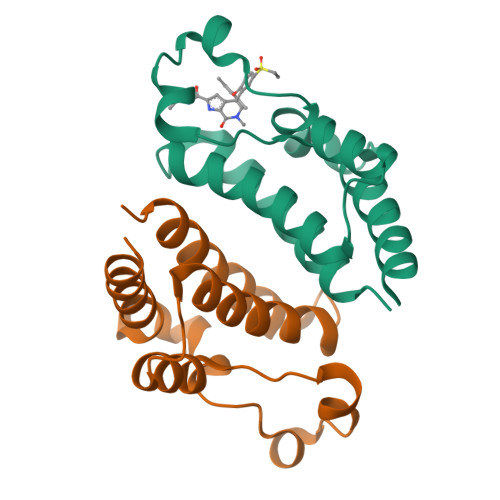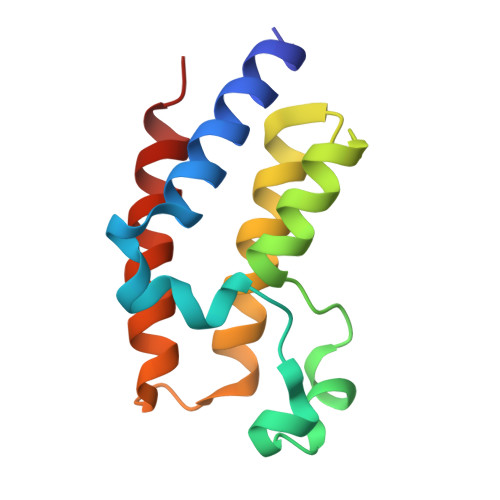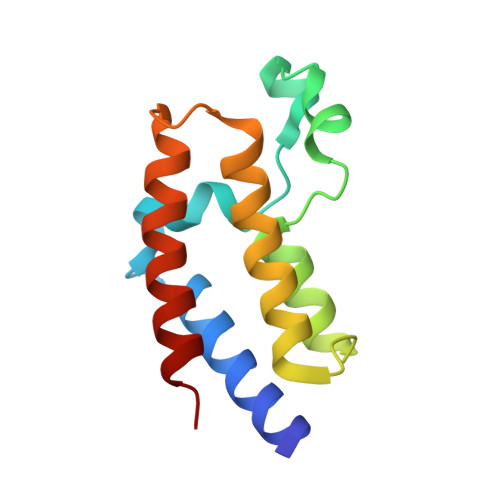Discovery ofN-Ethyl-4-[2-(4-fluoro-2,6-dimethyl-phenoxy)-5-(1-hydroxy-1-methyl-ethyl)phenyl]-6-methyl-7-oxo-1H-pyrrolo[2,3-c]pyridine-2-carboxamide (ABBV-744), a BET Bromodomain Inhibitor with Selectivity for the Second Bromodomain.
Sheppard, G.S., Wang, L., Fidanze, S.D., Hasvold, L.A., Liu, D., Pratt, J.K., Park, C.H., Longenecker, K., Qiu, W., Torrent, M., Kovar, P.J., Bui, M., Faivre, E., Huang, X., Lin, X., Wilcox, D., Zhang, L., Shen, Y., Albert, D.H., Magoc, T.J., Rajaraman, G., Kati, W.M., McDaniel, K.F.(2020) J Med Chem 63: 5585-5623
- PubMed: 32324999
- DOI: https://doi.org/10.1021/acs.jmedchem.0c00628
- Primary Citation of Related Structures:
6VIW, 6VIX, 6VIY, 6VIZ - PubMed Abstract:
The BET family of proteins consists of BRD2, BRD3, BRD4, and BRDt. Each protein contains two distinct bromodomains (BD1 and BD2). BET family bromodomain inhibitors under clinical development for oncology bind to each of the eight bromodomains with similar affinities. We hypothesized that it may be possible to achieve an improved therapeutic index by selectively targeting subsets of the BET bromodomains. Both BD1 and BD2 are highly conserved across family members (>70% identity), whereas BD1 and BD2 from the same protein exhibit a larger degree of divergence (∼40% identity), suggesting selectivity between BD1 and BD2 of all family members would be more straightforward to achieve. Exploiting the Asp144/His437 and Ile146/Val439 sequence differences (BRD4 BD1/BD2 numbering) allowed the identification of compound 27 demonstrating greater than 100-fold selectivity for BRD4 BD2 over BRD4 BD1. Further optimization to improve BD2 selectivity and oral bioavailability resulted in the clinical development compound 46 (ABBV-744).
Organizational Affiliation:
Oncology Discovery, AbbVie Inc., 1 North Waukegan Road, North Chicago, Illinois 60064, United States.

















